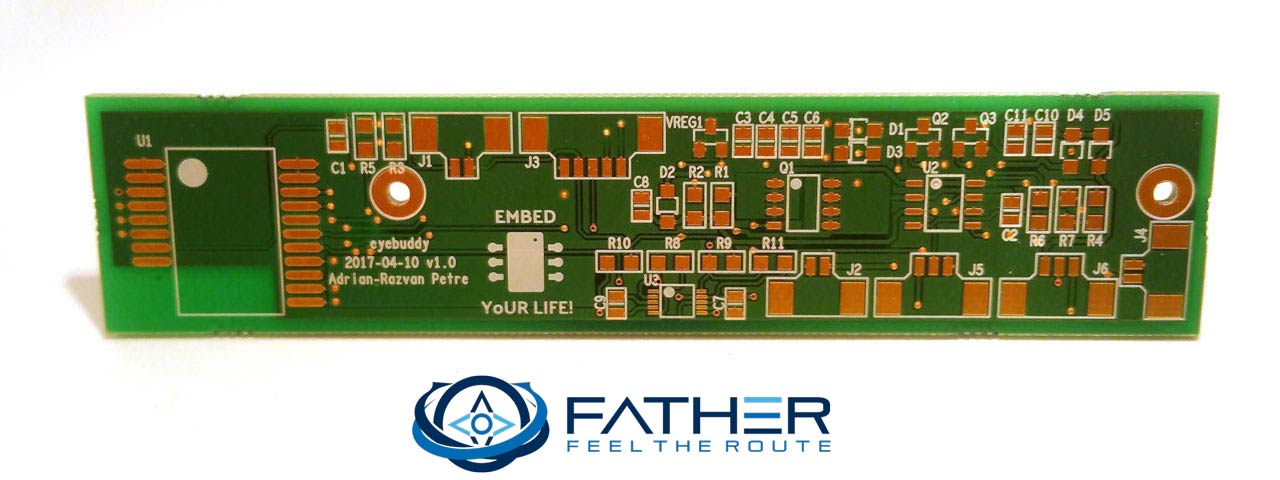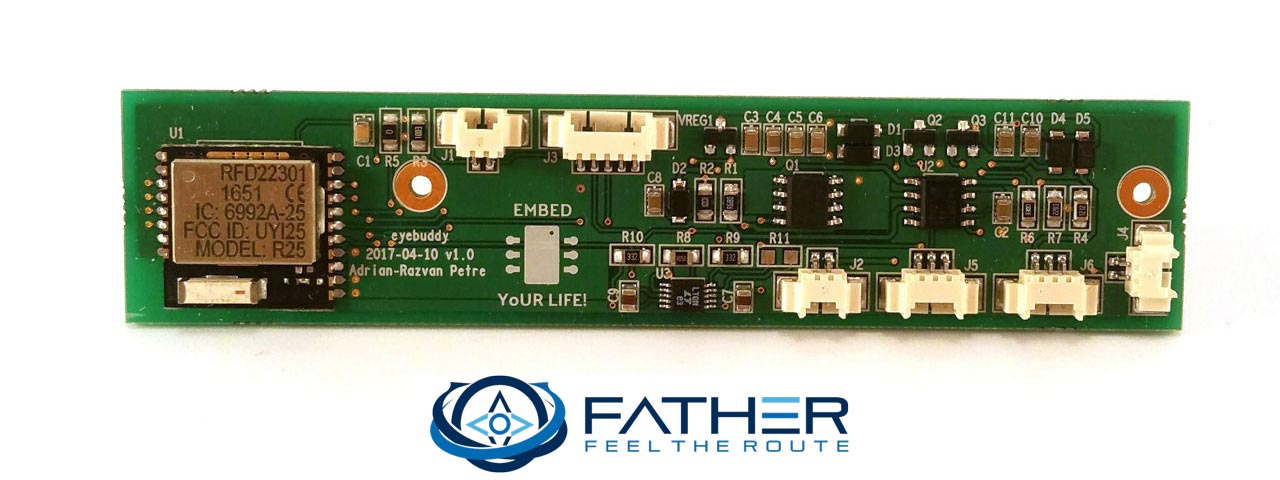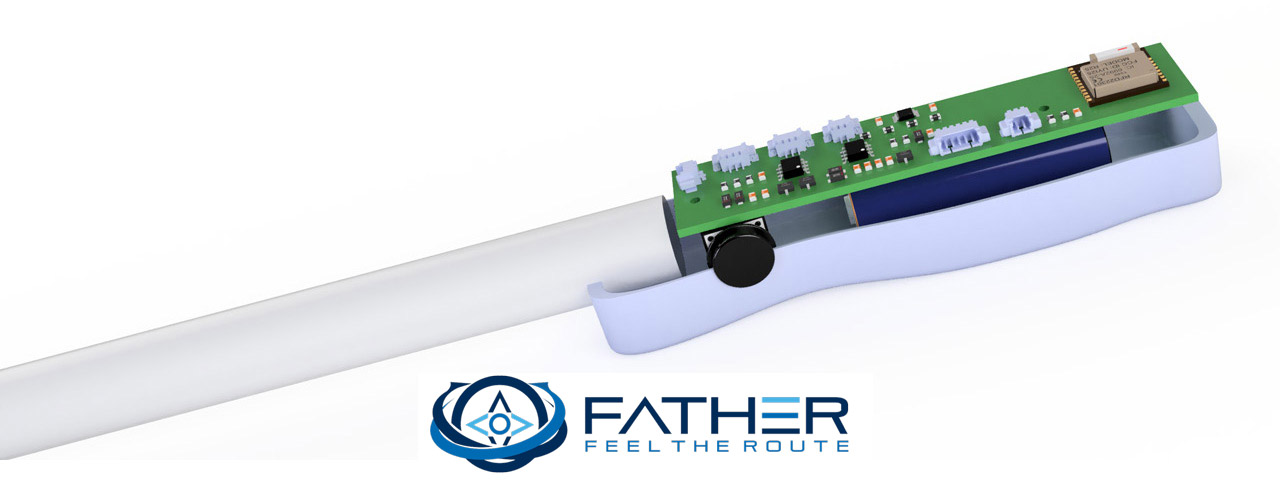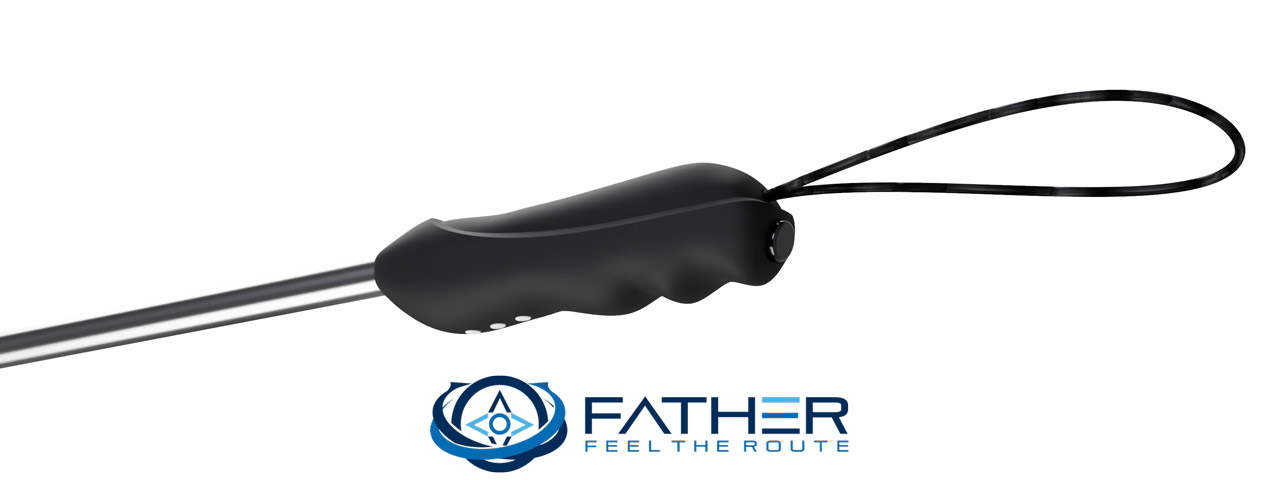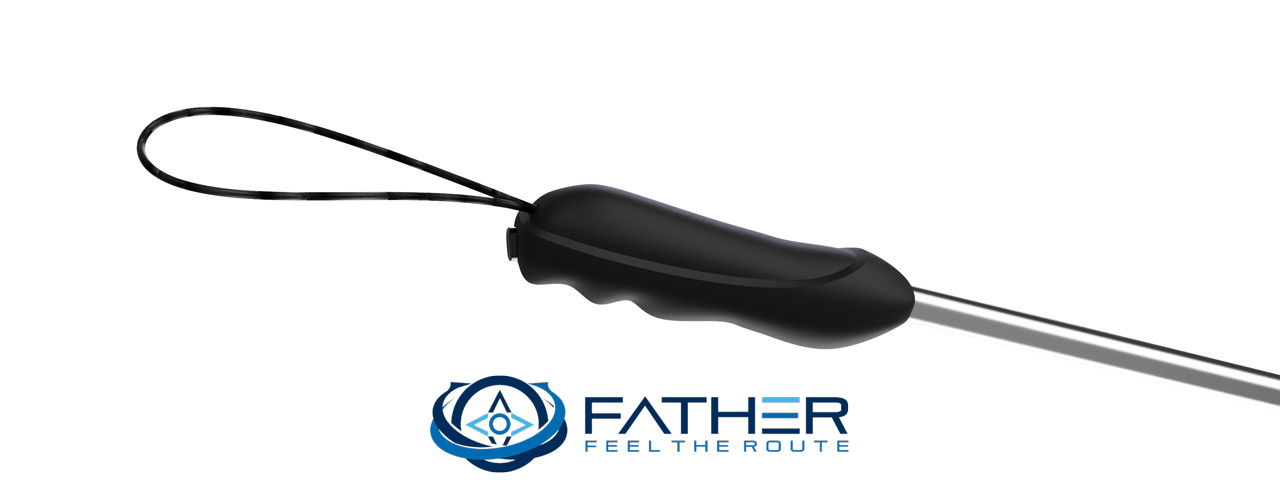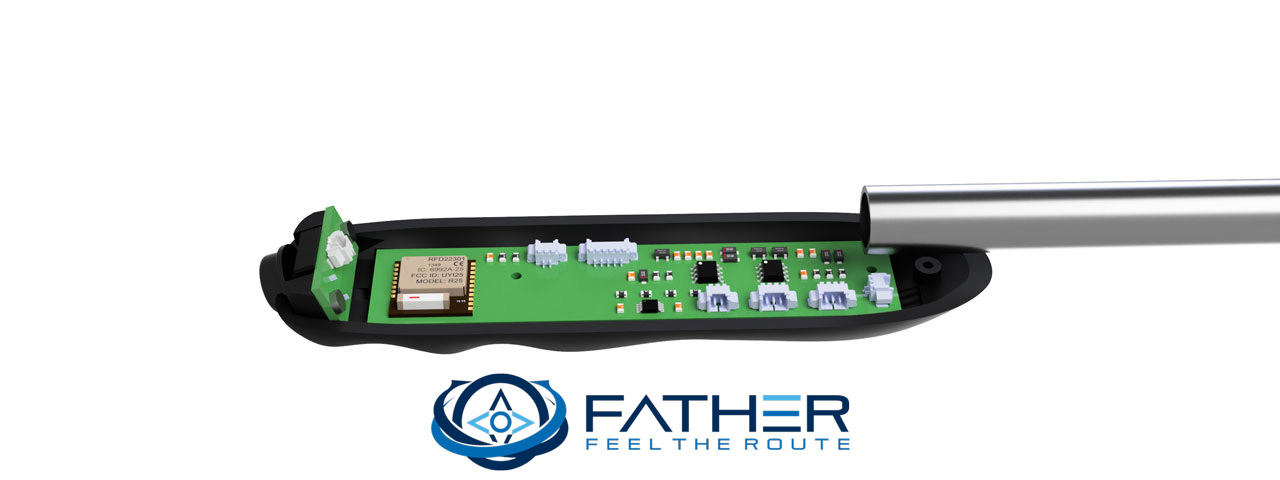Smart cane for VI (Visually Impaired) was one of the first Embeto Electronics projects which I have developed for FaTHER, a Research and Development company. The smart cane was an electronic device designed to work connected to a smartphone application sending commands to be executed. Based on these commands, the smart cane vibrated following certain patterns. The device also included a panic button designed to call an emergency number when presses. I was in charge of the electrical circuit design, layout design, PCB assembly, soldering, and product design, as detailed in the following sections.
Hardware Design
I have designed and manufactured several circuit boards for this project during its development, but I can only attach below in Figures 1 and 2 an initial version of this one (dated March 2017). You can observe a Bluetooth module with integrated MCU and different passive and active components. As I did in the case of other projects such as SMSGate, nanodroid, and smart ear tag for bison, I printed the solder paste and soldered the components at the Faculty of Electronics’ Center for Electronic Technology and Interconnection Techniques (UPB-CETTI).
Product Design
Believe it or not, the most challenging part of this project was the product design stage. Designing several mock-ups and meeting with visually impaired people to get their feedback was a time consuming but absolutely necessary process in order to provide the best user experience for this product. Displayed in Figures 3 and 4 is a first version of enclosure design while in Figures 5 to 7 is a second and final one which I had also manufactured using 3D printing.
Enclosure Fabrication
As seen in Figures 8 and 9 I manufactured at the Modulab workspace the final design for this product by 3D printing it. The two small vibration motors were embedded with epoxy resin on each side of the enclosure. Charging contact points were placed on the bottom side and the panic button was placed on the rear side of the product, where it was protected from accidental activations.
Final Product
In Figures 10 to 13, the final smart cane for VI product is displayed, before and after the painting process. Looking back I can now say that this project was very challenging and demanding. It has also helped me to better understand the design process of a product and how it should always include a feedback loop from the end-user right to the designer.
